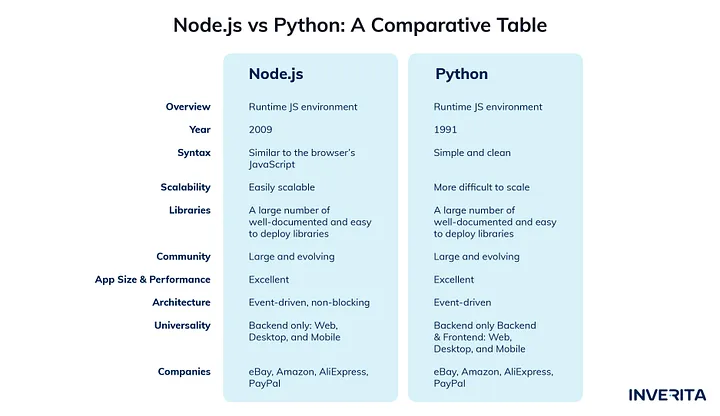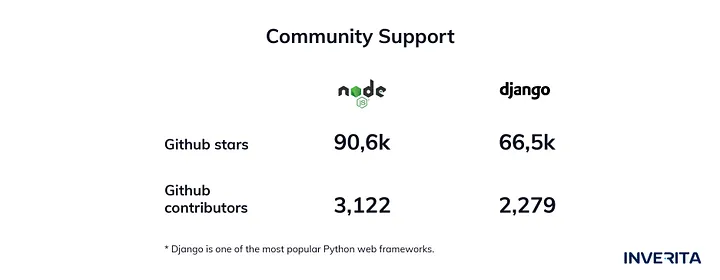Being designed in different timelines and for different purposes, Python and Node.js have become rivals when it comes to web development.
Both Python and Node.js offer an excellent variety of features to meet performance requirements. The old saying has it that there are no better or worse programming languages, and everything depends on the requirements of your project. Let’s see which of them is the best fit for your project.
Node.js vs Python — What’s the Difference?
The main difference between Node.js vs Python is that Node.js is an asynchronous event-driven JavaScript runtime environment while Python is a full-fledged and object-oriented programming language.
What is Node.js — Brief Overview
Node.js was released in 2009 to build scalable server-side and network applications. It is an open-source, cross-platform JS runtime built on Google Chrome’s V8 JS engine, which is a virtual machine that consists of a built-in interpreter, compilers, and optimizers. Node.js has an event-driven architecture capable of asynchronous I/O.
Node.js has a large and constantly growing community that has developed a lot of frameworks to speed up the development process.
inVerita development teams prefer Node.js to use JS on both the client and server sides.
What is Python — Brief Overview
Python is an open-source, object-oriented, and general-purpose programming language, released in 1991. The main principle of Python is the readability and don’t-repeat-yourself concept (DRY). A simplified syntax, an extremely large ecosystem of libraries and packages, and versatility make Python the first-choice language for new developers.











_1764586939-small.webp)
